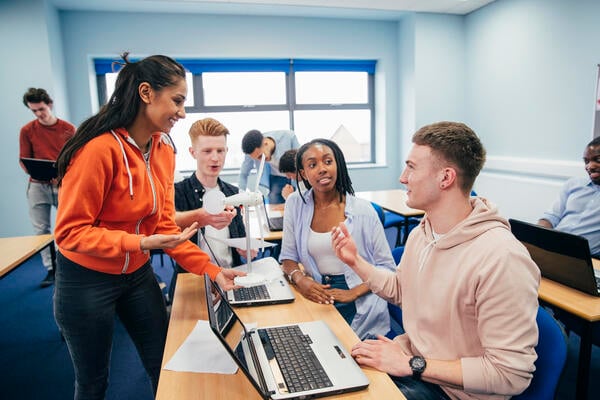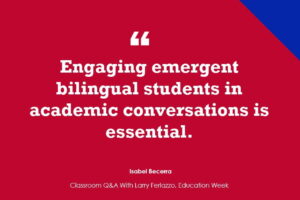
Students Who Lack Academic Confidence More Likely to Use AI
Some students are more likely to use generative AI to find answers instead of learning.
Colleges and universities have sought to equip students with the skills to use generative artificial intelligence tools thoughtfully and ethically, but a recent study finds students often outsource thinking to chatbots.
Research from the University of Southern California Center for Generative AI and Society found that the average student who uses generative AI services does so to get a direct answer, not to learn. Students who feel less confident in a course or who do not engage with their peers are also more likely to turn to technology for help.
The findings point to a need for greater learning support for students, including teaching them improved internet search skills, providing more faculty assistance on how to use generative AI and instilling a sense of belonging in the classroom.
State of play: As generative AI tools become more common, a large share of students say they engage with AI regularly. Two-thirds of students say they use generative AI chatbots weekly, according to a 2025 study from Tyton Partners.
Faculty have expressed concern that students are circumventing thinking and learning by using artificial intelligence tools, but students claim they’re using AI to advance their educations. A recent survey by Inside Higher Ed and Generation Lab found that 85 percent of students said they’d used generative AI for coursework in the past year; 55 percent said they used it for brainstorming, half asked it questions as if it were a tutor and 46 percent used it to study for quizzes or exams.
Nearly all students Inside Higher Ed surveyed said colleges and universities should respond to threats against academic integrity, with over half of students requesting clear, standardized policies about when and how to use AI or for colleges to provide additional flexibility around AI for transparent student use.
The study: USC researchers surveyed 1,000 U.S. college students to understand when and how they’re using generative AI, compared to other help sources. Researchers distinguished between instrumental help-seeking behaviors—such as getting clarification on a topic covered in class—versus executive help-seeking as a means to an end, like getting quick answers to complete an assignment.
Students said they were most likely to turn to the internet or an instructor for learning assistance, ranking tutors and peers below generative AI. For executive help, students similarly turned to the internet most often, but then looked to generative AI or a peer before instructors or tutors.
To researchers, the trend indicates that students feel more comfortable turning to technology than human sources for help.
National data on how and when students engage with technology versus human supports is mixed; one analysis from the Center for Studies in Higher Education at the University of California, Berkeley, found that post-pandemic, fewer students reported helping their classmates. However, Tyton Partners found that 84 percent of students said they first turn to people, including a peer or instructor, when they need help in a course, and only 17 percent primarily use AI tools.
USC’s research also found that certain students were less likely to depend on AI; those who had better internet search skills or perceived themselves as competent in their courses were less likely to turn to generative AI tools for help.
Conversely, students who were averse to asking peers for support or perceived themselves as less competent were much more likely to engage with generative AI. Students who trusted generative AI, similarly, were more likely to use the tools to find answers.
A recent survey from WGU Labs found that students from marginalized backgrounds, including first-generation students and students of color, were more likely to say they’re open to AI tools for academic support. WGU Labs’ report theorized this trend could be tied to what they see as a lack of support in other traditional forms offered by institutions.
However, pedagogy can have an impact on how students interact with AI; if the professor encourages thoughtful generative AI use, students are more likely to engage in learning-oriented behaviors, rather than just ask for answers from chatbots. Researchers believe this speaks to the social impact professors can have on how students use AI.
Source link


